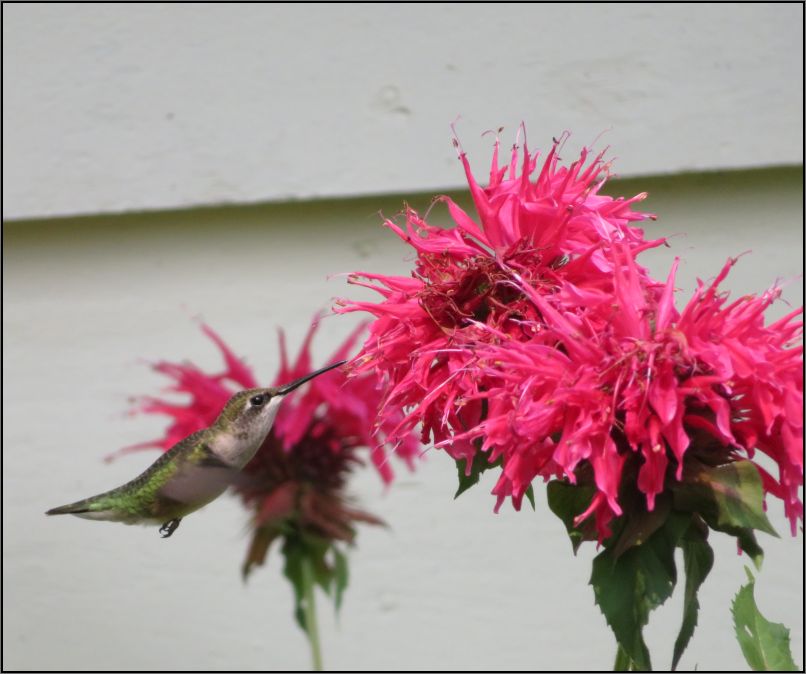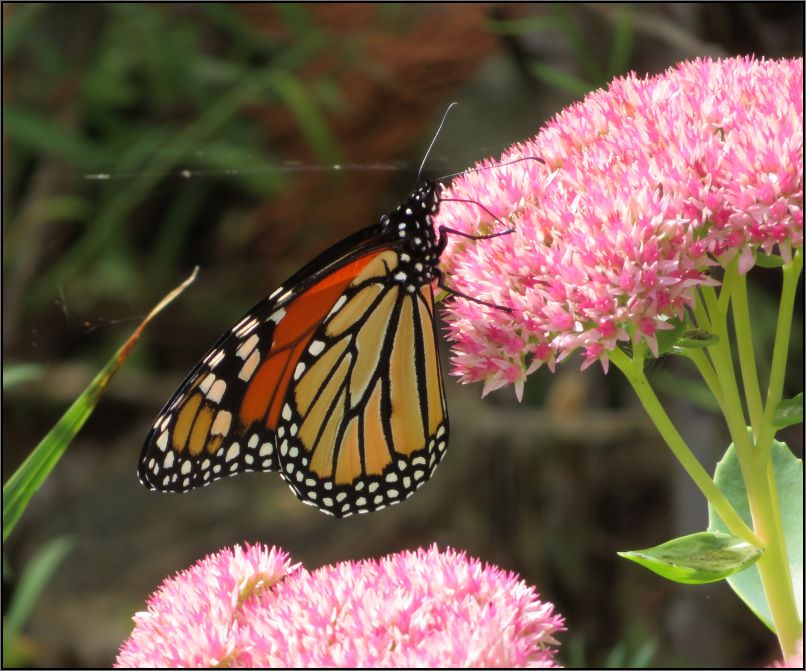As the cold season approaches, the little creatures start their annual feast, getting ready for hibernation, or migration. The flowers are still blooming, offering their reach nectar to the ones that like foraging the beautiful gardens.
Many birds, bees, moths, insects, and butterflies consume nectar. Without knowing it, they spread the pollen that is stuck to their body to other plants, therefore pollinating.
One of the most common nectarivore birds is the hummingbird (which are gone by now, migrating south to their wintering areas), but I also found out early this year how dear is the nectar to the Baltimore oriole. Their bills are especially down-curved to be able to reach the nectar at the bottom of the flowers.
But nectarivory is extremely common in insects.
Not all are pollinators, and the ants are actually inhibiting the germination of the pollen at the flowers they visit.
While some insects such as ants and hoverflies will crawl into the flower to get their nectar, others, like butterflies, moths, and bees are known for their special proboscis they are using to feed from the bottom of a flower.
Found on every continent except Antarctica, the bees are known for their role in pollination. There are over 16,000 known species of bees, organized in seven biological families. Some of them live socially in colonies, while most species are solitary.
September and October are two busy months for bees, in the Northern Hemisphere. Especially for bumblebees.
A bumblebee is any of over 250 species in the genus Bombus, one of the bee families. Like their relatives, the honeybees, bumblebees feed on nectar, using their long hairy tongue called proboscis. The proboscis is folded under the head during flight, but getting straight when the bumblebee is ready for feeding. Some bumblebees steal the nectar, making a hole near the base of a flower to access the nectar, while avoiding pollen transfer. Others are fully immersing in the flower, getting covered all over in pollen.
Only queens and female workers collect pollen purposively, grooming the pollen into their pollen baskets found on the hind legs, depositing the harvest into brood cells once they return to their nest.
Bumblebees vary in appearance, although they are generally plump, and densely furry. With a round body, many of them have broad bands of colour. Once they dip themselves into the pollen, they become cute fluffy little creatures.
Every autumn brings me joy seeing them gathered together over the flowers in my cottage garden. They seem to like these tall yellow flowers, and in cool evenings they seem to ignore the surroundings.
They look quite lethargic, lacking in energy, signs they will die soon, I guess. Or they might be queens, getting ready for the winter. Except for new queens, which hibernate during winter, bumble bee colonies die in late fall. Queens overwinter in small holes just beneath the ground’s surface, emerging in spring to create new colonies.
Due to many factors, over the last half century, there was a declining of bee population in Europe, North America, and Asia.
It is said that one third of the human food supply depends on pollination, so I’m more than happy when I see the bunch of them foraging freely in my garden.
Interesting facts:
* Some species of bee employ a technique called sonication, or buzz pollination, when they harvest pollen. During sonication, the bee rapidly vibrates its flight muscles while attached to the flower. This loosens the pollen, which makes it easier to collect. Also, the length of their tongue determines which flower a bee can forage from.
* A bee queen can live up to five years. She is the busiest in the summer months, when she can lay up to 2,500 eggs a day.
* Bees have five eyes (two compound eyes and three tiny ocelli eyes)
* Each bee has 170 odorant receptors, which means they have one serious sense of smell. They use this to communicate within the hive and to recognise different types of flowers when looking for food.
* Honey bees are amazing flyers. They fly at a speed of around 25km per hour and beat their wings 200 times per second.
* Bumblebees are one of the few insects that can control their body temperature. They can shiver their flight muscles in cold weather to warm themselves. Their large size and hairy coats also help them stay warm.













Love these pollinator shots Christie. Thanks for sharing. Allan
LikeLiked by 1 person
Thank you Allan! Mother Nature is amazing!
Christie
LikeLiked by 1 person
Such a beautiful capture Christie..
LikeLiked by 1 person
Thank you😊
LikeLike
Such a beautiful and colourful post, Christie. At this time of the year, we barely have any flowers growing outside, yet at the same time, it is fascinating to watch seasons shift and change 🙂 Aiva xx
LikeLiked by 1 person
The season is changing here too, Aiva. Last week got colder, but the temperatures still vary on a daily basis. Although this year foliage isn’t that great, we enjoy the sun these days, indulging ourselves under the warm sunshine😊
Have a lovely season!! Christie xx
LikeLiked by 1 person
These pictures are the bees knees.
LikeLiked by 1 person
thank you xoxo
LikeLiked by 1 person
So beautiful! So many great shots… the colours are just so vibrant!
LikeLiked by 1 person
Thank you!! Hopefully I have enough of them🙂 We’ll need to keep them close until the next year blooming season. Have a nice weekend!
LikeLike
Amazing little creatures ! Wonderful macro work.
LikeLiked by 1 person
Thank you Andy!
LikeLike
I really enjoyed your celebration of pollinators, Christie. You did a good job of imparting many interesting facts and integrating them nicely with these wonderful photos.
LikeLiked by 1 person
Thanks so much Jet for your kind words!
LikeLiked by 1 person
I love your bees. Texas had a terrible freeze this spring killing many of our bees. I saw a few recently and very carefully removed one from a spider’s web but it was too late. The poor wee spider was so annoyed…
LikeLiked by 1 person
Sorry to hear that the freeze killed the bees in
Texas. Hopefully next year the weather will behave much better😊 Happy Sunday!!
LikeLiked by 1 person
Thank you! Happy Monday from me!
LikeLiked by 1 person
Fascinating post, Christie! And such a colorful burst for my eyes this evening. I loved it! I think by now, we all (should) know the importance of bees in our world and our lives. I find them amazing, cute, energetic, and important for our survival. Very different than wasps. I wish more people understood the difference. There is no reason to be afraid of bees. They are super important for many reasons. Happy Halloween!
LikeLiked by 1 person
Hope you had a nice Halloween too! Unfortunately we didn’t see kids in our neighbourhood this year either, although many friends stated otherwise in other areas. So we had to eat all candies ourselves😅😅 Autumn is always a nice season for us here, and the little bees keep us entertained for sure, even after some birds start migrating south. I will miss them till next spring for sure!
LikeLiked by 1 person
Wow, this is a really interesting post Christie! Never thought one can say so much about bees (where were you when I had to write an essay about bees in primary school 😉).
Love your close-up shots of the bees on the flowers … I could almost see how they were dipping in and out of the pollen (do you think they get hay fever as well? – hopefully not) 😁.
LikeLiked by 1 person
Hehe, luckily I didn’t have to write such essays in school, I wouldn’t have known so many things😉
LikeLiked by 1 person
Perfect pictures!
LikeLiked by 1 person
thank you🙂
LikeLiked by 1 person
You’re welcome
LikeLiked by 1 person